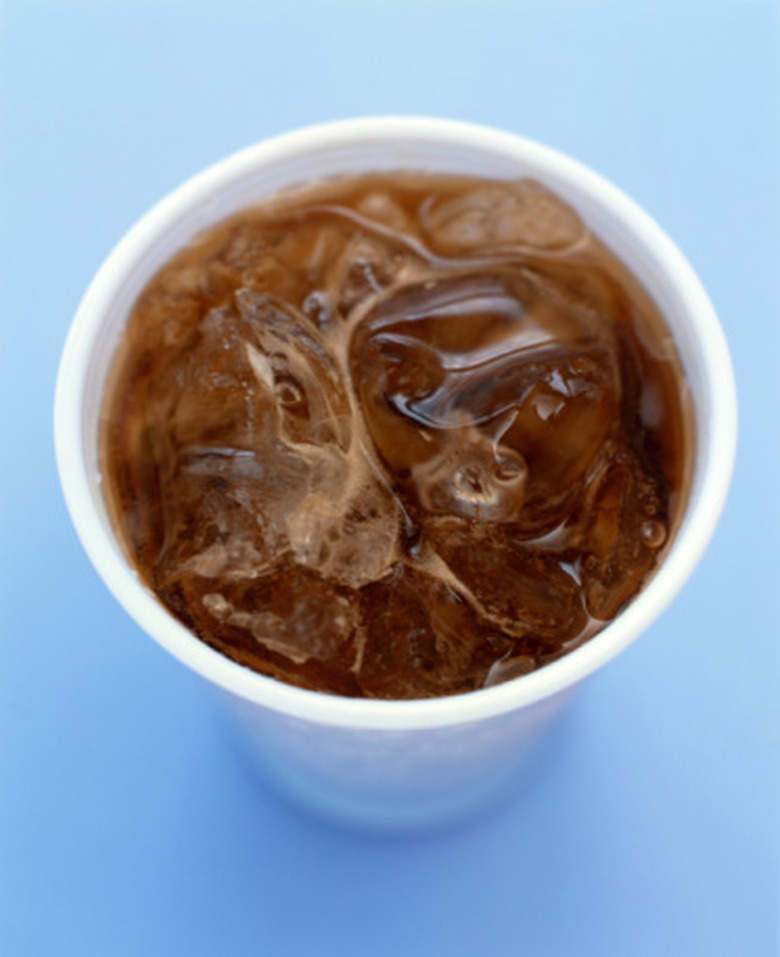Science Fair Project On The Effect Of Carbonated Drinks On Meat
There are myths that carbonated drinks can damage our stomachs because soda has been shown to dissolve pennies and nails. The phosphoric acid in carbonated drinks such as Coca Cola makes it very acidic. It has a pH level around 2.7. The pH of our stomach is normally between 1.5 and 3.5 and it can dissolve meat. You can design a science fair project to test the effects of carbonated drinks on meat. Hypothesis: if the ph of our stomach is 2.5 and dissolves meat, then soda with a pH of 2.7 should dissolve meat.
Materials
Materials
In order to do the experiment, you will need to gather these materials:
Box of rubber gloves 9 oz. fresh steak 9 oz. fresh chicken breast 9 oz. fresh salmon steak or other fish 3 large (approximately 50 oz. are larger) clear bowls with tops 6-12 oz. cans of the same soda or carbonated drink Marker Camera Pencil Notebook Kitchen food scale
You can use a different amount of meat as long as all meat weights are the same. Using a clear carbonated drink will make it easier to observe changes in the meat.
Variables and Constants
Variables and Constants
The independent variable is the kind of meat used (steak, chicken breast and fish). The dependent variable is whether the meat will dissolve in the soda. The constants or control variables are the amount of soda used per bowl and the size of the bowls. Additional constants are the room temperature and the length of the experiment.
Methods
Methods
Put on the rubber gloves. Place a piece of steak, chicken breast or fish inside each of the bowls. Pour two cans of soda into each of the bowls. Be sure the meat in the bowl is fully immersed in the soda and then seal the bowl with the lid. Label the name of meat and the date on each container with the marker. For the next five days, weigh each meat separately using a new pair of rubber gloves and record weights. Observe any observations in the notebook as well. Be sure to document the experiment with photographs from the beginning to the end of project if possible.
Results
Results
After five days, you will have enough data to come to a conclusion about whether your hypothesis was supported by the experiment. Do research to support your conclusions. You can visually display your results with graphs, charts, photos or a PowerPoint presentation. Discuss further research that could be done, e.g. doing the project longer, using a different type of carbonated drink or utilizing cooked meat.
References
Cite This Article
MLA
Hampton, Wren. "Science Fair Project On The Effect Of Carbonated Drinks On Meat" sciencing.com, https://www.sciencing.com/science-effect-carbonated-drinks-meat-8623494/. 24 April 2017.
APA
Hampton, Wren. (2017, April 24). Science Fair Project On The Effect Of Carbonated Drinks On Meat. sciencing.com. Retrieved from https://www.sciencing.com/science-effect-carbonated-drinks-meat-8623494/
Chicago
Hampton, Wren. Science Fair Project On The Effect Of Carbonated Drinks On Meat last modified August 30, 2022. https://www.sciencing.com/science-effect-carbonated-drinks-meat-8623494/


